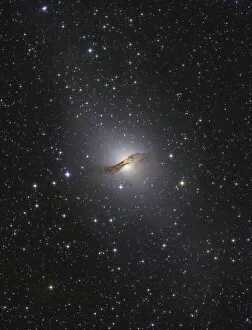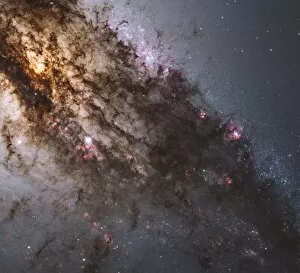Centaurus A Collection
Centaurus A, also known as NGC 5128, is a captivating giant elliptical galaxy that has intrigued astronomers for years
For sale as Licensed Images
Choose your image, Select your licence and Download the media
Centaurus A, also known as NGC 5128, is a captivating giant elliptical galaxy that has intrigued astronomers for years. This celestial wonder was captured by NASA's powerful telescopes and released to the public on May 20, 2011. Situated in the constellation Centaurus, Centaurus A stands out with its dark lanes of dust that crisscross its majestic form. Its lenticular shape adds to its allure, making it a unique sight among the vastness of space. The radio emissions emitted from this enigmatic galaxy have earned it the name "radio source. " Scientists at NASA's Goddard Space Flight Center have been instrumental in studying and understanding these emissions further. Their dedication enables us to delve deeper into the mysteries of our universe. In June 2011, another image release showcased Centaurus A in all its glory through the lens of Hubble Space Telescope (HST). The intricate details revealed by this remarkable instrument left observers awe-struck. This active galaxy has also been compared to Halley's comet due to its striking appearance. Its false-color radio map showcases an array of vibrant hues that highlight different aspects of this cosmic marvel. Artists have taken inspiration from Centaurus A and created stunning artwork depicting its dynamic nature. These visual representations bring forth a sense of wonder and curiosity about what lies beyond our reach. As we continue exploring the depths of space, Centaurus A remains an intriguing subject for researchers worldwide. Its secrets are slowly being unraveled thanks to advancements in technology and dedicated scientists who strive to understand more about our ever-expanding universe.










